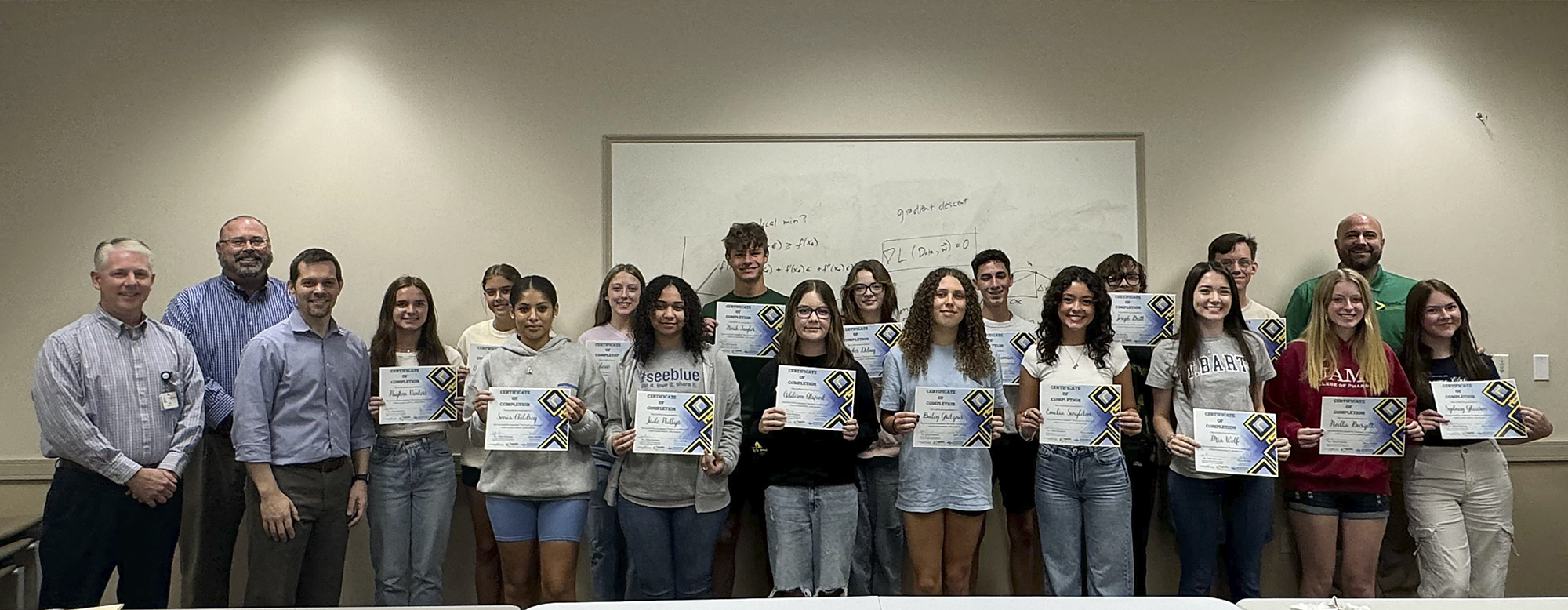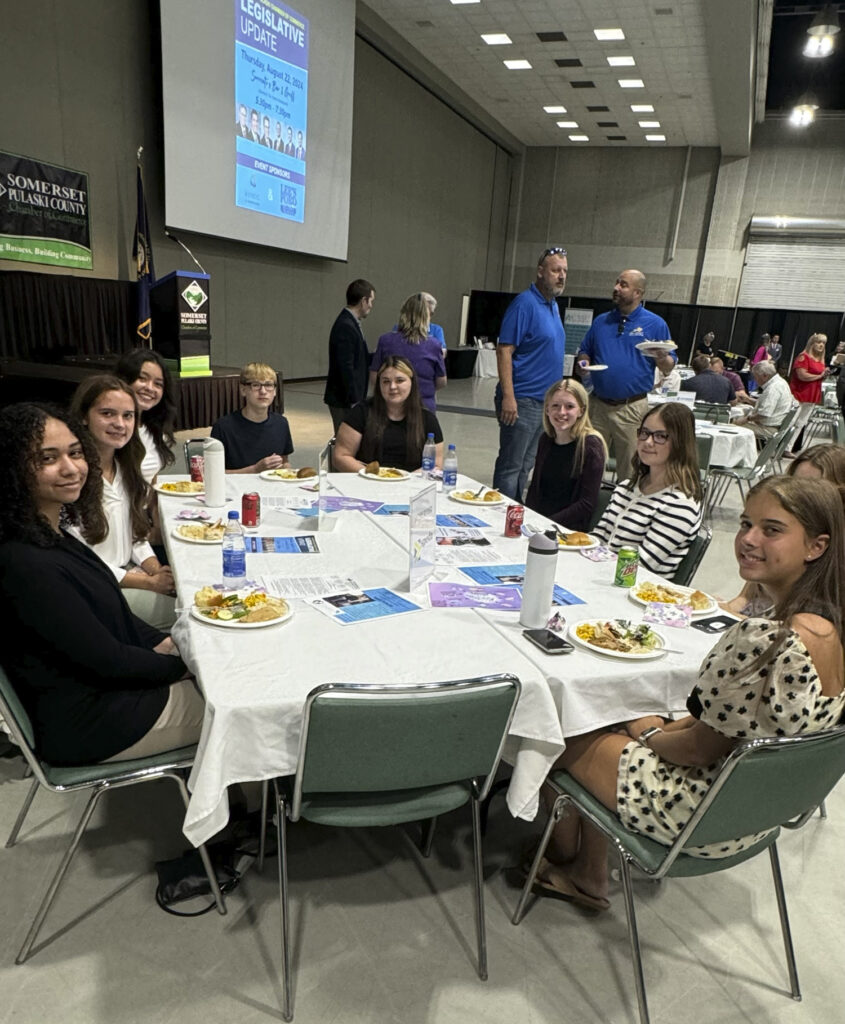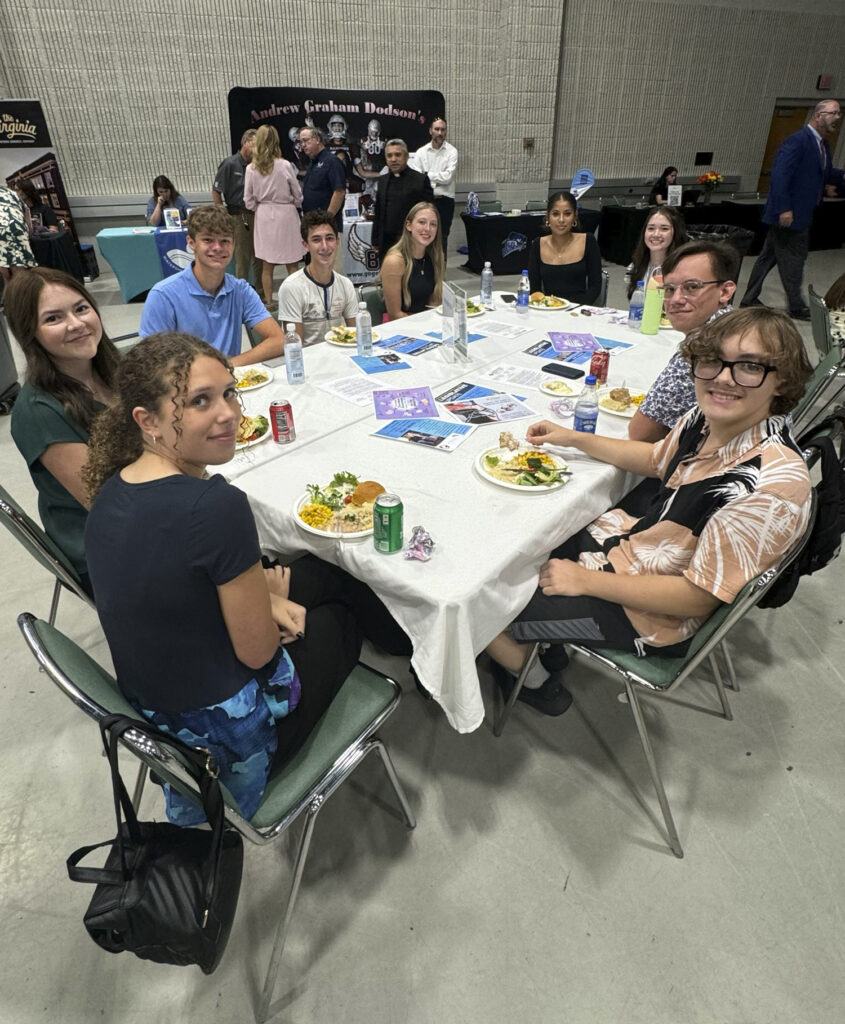Dr. John Pearson, Duke University Assistant Professor and Southwestern High School alum, delivers enlightening educational experience for students and community
How do neurons work, think, learn and see the world?
Twenty-two of the community’s brightest science, technology, and math high school students explored these complex questions during a week-long short course Aug. 5-9 with Southwestern High School alum and Duke University School of Medicine Assistant Professor of Neurobiology Dr. John Pearson. The course — sponsored by the Somerset-Pulaski Economic Development Authority (SPEDA), the Somerset-Pulaski County Chamber of Commerce, and Lake Cumberland Regional Hospital — taught students the intricacies of how humans’ brains are wired, using neuroscience case studies and experimental activities to guide their learning.
The course coincided with Pearson delivering the keynote address at the August Chamber of Commerce monthly luncheon, where he shared his team’s research into the brain’s role in Parkinson’s Disease, obsessive-compulsive disorder and substance use disorder. He also shared what inspired his career path and led to teaching a short course like this: a weekly graduate school seminar taught by Bill Bialek at Princeton University, one of the world’s leading researchers in Pearson’s field.
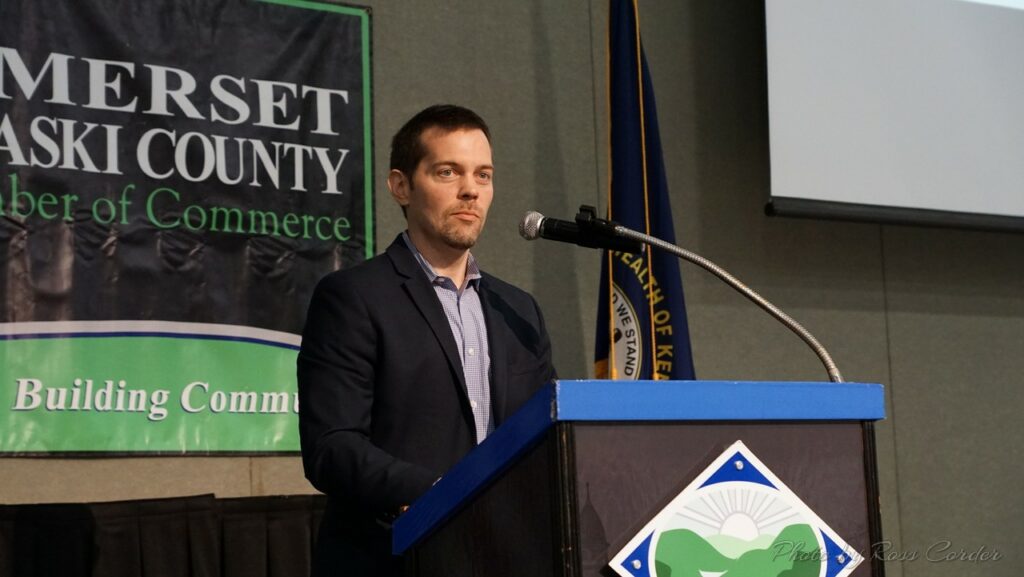
After coming home to Burnside from graduate school, uncertain of where he would go next, Pearson told the crowd he began thinking about the last time science had been fun. Bialek’s class immediately came to mind.
“He would stand in front of the board — we didn’t have PowerPoint then — he would kind of pull his beard, and he’d stand there with his piece of chalk,” Pearson told the crowd. “And Bill would start to ask a very basic question, which is, if you’re a little bacterium floating around, how do you decide where to go next? How do you decide where sugar is in the environment and how you get it, and just how do you do these things where there’s no brain involved and there’s a lot of noise in the world?”
Three hours later, Bialek would arrive at an answer, Pearson explained. “He would take all this data from biology, and he would think about it like a physicist. He would talk about noise, and he would talk about signal. And by the end, it would make sense. And I thought, that’s kind of cool.”
This curiosity ultimately led Pearson to Duke University’s School of Medicine and, years later, into the basement-level conference room at Lake Cumberland Regional Hospital with students from all three public high schools in his hometown.
“I hope I brought a little of that Bill Bialek curiosity to these students,” Pearson said. “They are incredibly talented, and I was honored to pose some of these fundamental life questions to them and walk them through the math and science that leads us to the answers.”
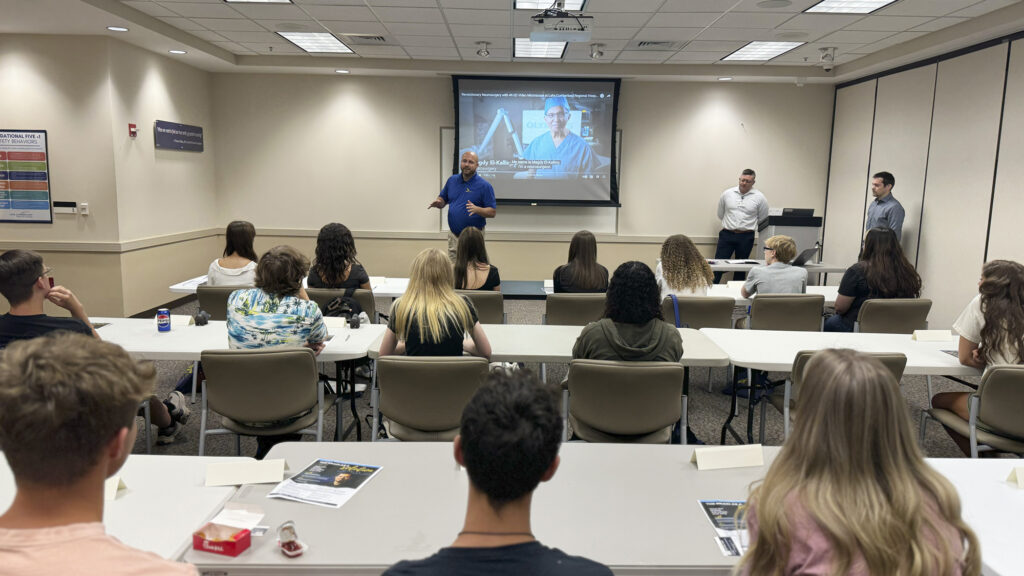
SPEDA President and CEO Chris Girdler and Chamber Executive Director Bobby Clue attended high school with Pearson. Girdler said he could not think of a better mentor or teacher for the community’s students interested in pursuing careers in the sciences.
“Dr. Pearson was at the top of our class, graduating early and accomplishing some incredible educational and career milestones along the way,” Girdler said. “To have someone of his caliber willing to come home and bestow some of the knowledge he has gained through the years with students is a gift. We wanted to give these students a unique educational experience, and I think we have done that — hopefully inspiring them along the way to be curious, chase their dreams and work hard to get where they want to go. I am so grateful to the hospital and Chamber for seeing the value in this experience and joining us to make it happen.”
Clue thanked Pearson for sharing such a unique perspective with Chamber members and local students.
“You could hear a pin drop in a room of over 235 people when Dr. Pearson was speaking,” Clue said. “The brain is the key to understanding the universe and I am confident that Dr. Pearson’s research will lead to significant breakthroughs in reducing or eliminating diseases like Parkinson’s in the future. What an honor and privilege to welcome him home and listen to his story.”
Members of the hospital leadership team also shared local career opportunities with students during the short course, should any of them decide to pursue a career in medicine. Feedback from students who attended was overwhelmingly positive.
“I wanted to thank you for you providing my peers and I with an opportunity to learn from such a credited doctor and allowing us to be a part of such an exciting experience,” one student wrote.
Participating students were selected by their schools following a competitive application process. They included:
Southwestern High School — Avery Cummins, Davie Chowning, Noella Burgett, Colton Hoskins, Joseph Britt and Addison Atwood
Somerset High School — Alexis Lamb, Jonas Blakeman, Sonia Childrey, Baley Gretzner, Mia Wolf and Noah Taylor
Pulaski County High School — Payton Venters, Sydney Gleason, Emilia Singleton, Dylan Owens, October Delay and Jade Phillips
